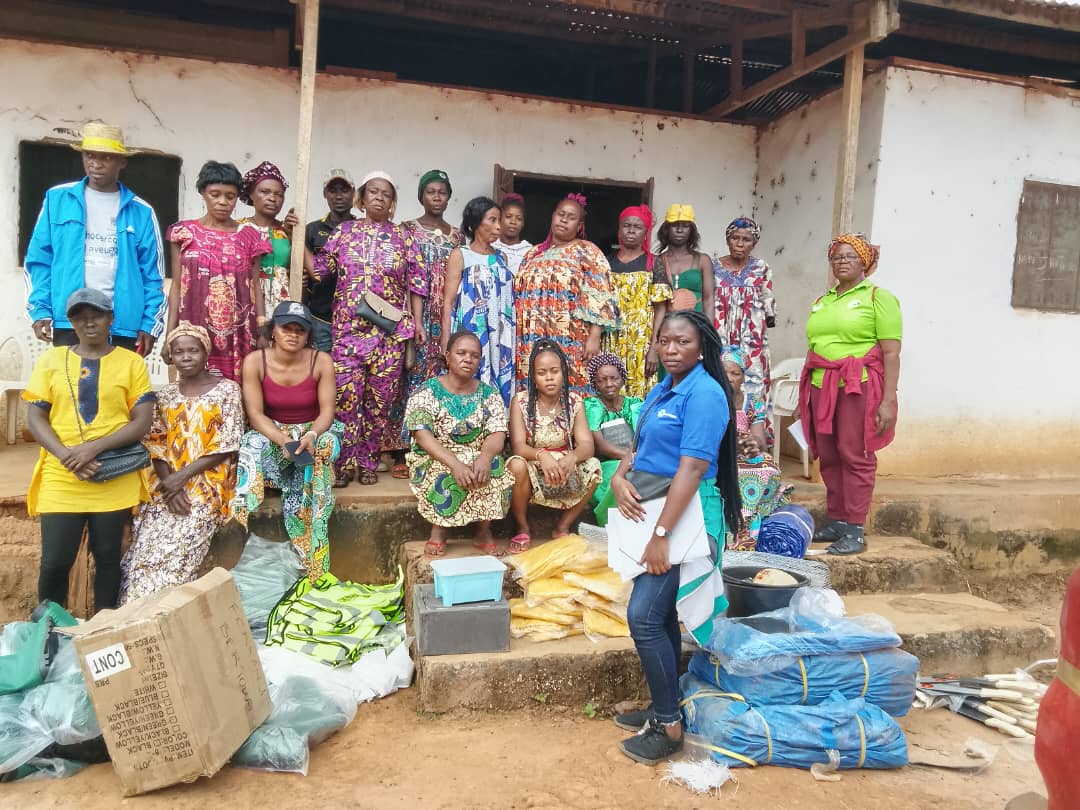AAFEBEN EQUIPS INDIGENOUS POPULATIONS AND LOCAL COMMUNITIES WITH EQUIPMENT FOR THE COLLECTION AND STORAGE OF NTFPs
From 9 to 14 July 2025, 02 AAFEBEN teams carried out a mission to equip the Baka and Bantu communities of Mintom, Lomié and Ngoyla with essential equipment. This initiative aims to facilitate the collection and storage of non-timber forest products (NTFPs) as part of the GEF7 project.
Written on Monday, July 21, 2025

The right tools are essential if communities are to make the most of their local natural resources. AAFEBEN, after preparatory work, has responded to this need by providing the necessary equipment to the Community-Based Organisations (CBOs) it supports. The The ultimate aim of this action is to optimise NTFP marketing opportunities through the quantity and quality of products, there by increasing the income of indigenous populations and local communities.
From 9 to 14 July 2025, AAFEBEN carried out a mission to distribute collection and storage equipment in the communes of Mintom, Lomié and Ngoyla. The distribution targeted a diverse group of 304 Baka and Bantou beneficiaries, including men, women and young people from 13 CBOs, who received individual equipment including: 291 boots, 304 machetes, 287 coats, 287 pairs of gloves, 292 torches with batteries, 97 5-litre buckets, 297 small tarpaulins, 31 rolls of netting (10 x 1.2 m² each, making a total of 310 x 1.2 m²). In addition to individual supplies, collective materials were also distributed to support community efforts, including: 28 large tarpaulins, 530 bags, 28 combos, 14 15-litre buckets, 16 iron crates, 14 registers, 361 chasubles and 48 padlocks.
This comprehensive distribution of tools should considerably improve the efficiency of NTFP collection and storage, contributing directly to the economic empowerment of these forest communities. This has been made possible by the GEF 7 project supported by the Ministry of the Environment, Nature Conservation and Sustainable Development (MINEPDED) and implemented by WWF.
AAFEBEN, for the well-being of women and indigenous peoples.
Back to Blog list